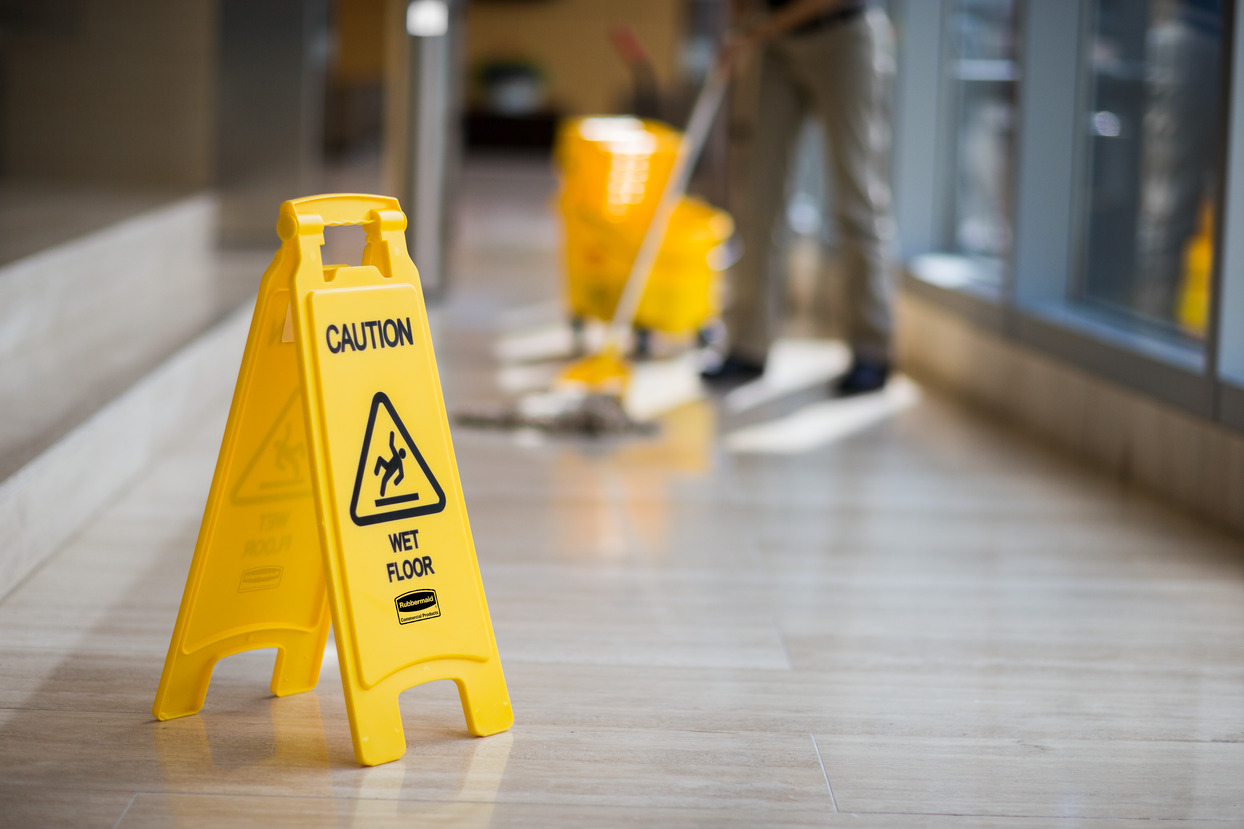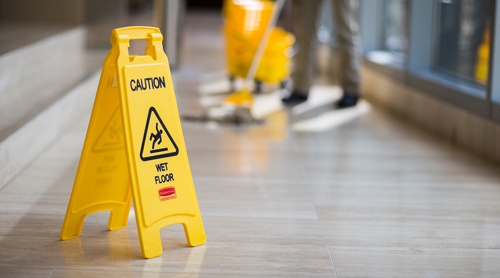
Blood and other bodily fluids can harbour dangerous pathogens, increasing the risk of bloodborne diseases such as hepatitis B. Effective management of blood spills in hospitals is critical to ensure infection control and public health. When accidents involving blood or bodily fluids occur, immediate and proper cleanup is essential to prevent the spread of potentially infectious materials.
This article covers how to manage blood spills, the necessary equipment, and detailed procedures to ensure the safety of custodial staff, patients, clinicians, and visitors. Hospitals can maintain a safe and hygienic environment by adhering to standard precautions and utilising appropriate disinfectants and personal protective equipment (PPE).
Managing Blood Spill in Hospitals
When a body fluid spill occurs, it’s essential to act quickly and follow established procedures. Hospitals must have detailed protocols on how to manage blood spills, emphasising the use of PPE and spill kits. These kits typically contain absorbent materials, disinfectants and biohazard bags for proper disposal.
Healthcare workers should follow universal guidelines when handling human blood and bodily fluids, as these can carry bloodborne pathogens like hepatitis B. Immediate cleanup of the spill area using a bleach solution or other effective disinfectant is vital to prevent the spread of infection. It’s important to use PPE, such as gloves and face masks, to protect against exposure to potentially infectious materials.
After the initial cleanup, all contaminated areas and equipment must be thoroughly disinfected and safely disposed of in biohazard bags. Regular training on blood spill management and adherence to the bloodborne pathogens standard ensures the safety of both healthcare workers and patients, effectively reducing the risk of bloodborne diseases.
What Risks Does Spilt Blood Pose?
Some types of infections can be passed from person to person through contact with blood and other bodily fluids, such as saliva. Blood-borne viruses can be very harmful. When blood spills occur, it is very important to reduce exposure to potentially infected materials.
A person's chances of becoming infected depends on how they are exposed to blood pathogens. This is called the route of transmission. For example, if infected blood comes in contact with broken or punctured skin, the risk of infection is very high. Risk also increases if the blood contacts someone's eyes, mouth or nose. Certain conditions like eczema can also increase the risk of infection.
What Should You Do If You Come In Contact With Spilt Blood?
If you come in contact with someone else's blood or bodily fluids, you should take immediate steps to disinfect yourself:
Post-exposure treatments generally need to be applied within 48-72 hours, so acting quickly is vital if you believe you have been exposed to an infectious material.
What Equipment Do You Need To Clean Up A Blood Spill?
To prevent exposure to blood-borne pathogens, cleaning staff should always wear personal protective equipment (PPE) such as gloves and face masks. Large spills may require cleaning staff to wear gowns or biohazard suits. If the area is not ventilated, respirators may also be recommended.
Cleaning staff should use equipment dedicated to biohazard cleanup. This equipment should not be used for cleaning common areas. A spill kit typically includes absorbent materials, disinfectants, tongs or forceps, biohazard bags, buckets, and launderable mop heads.
10 Steps To Quickly Manage A Blood Spill
The response to a biohazard spill should begin as soon as the incident occurs. Leaving spilt blood or bodily fluids on the floor greatly increases the risk that pathogens will spread to other areas of the hospital.
Before interacting with the spill, cleaning staff should put on PPE, including disposable inner gloves, washable outer gloves, a face mask, shoe covers, eye protection and a protective gown. All equipment should fit properly and be free from holes, tears and rips.
Next, the cleaning staff should gather the following:

2. Remove Sharps And Broken Objects
Safety signs should be placed around the spill. If the blood spill is small and not known to contain infectious pathogens, any sharps or broken objects should be removed first. Cleaning staff should never touch contaminated objects with their hands. A pair of tongs can be used to place sharps in an appropriate, leak-free container.
3. Soak Up The Spill
All visible areas of the spill should be covered with a highly absorbent, disposable material. For example, spill mops absorb blood and turn it into a gel to prevent leaks.
4. Apply Disinfectant To The Area
With the absorbent materials lying over the spill, the custodian should spray the entire area with an appropriate disinfectant. Following the directions on the bottle, the disinfectant should remain in the area for up to 15 minutes. Afterward, the custodian should work from the outer edges of the spills toward the centre, scrubbing the surface thoroughly.
5. Soak Up The Disinfectant
Throughout this process, used materials should be placed in a biohazard bag. Once all visible blood has been removed, the custodian should spray more disinfectant on clean towels and re-cover the spill area. These towels should also go in the biohazard bag, and the area should be left to air dry.
6. Dispose Of Cleaning Materials
All biohazard bags and sharps containers should be disposed of according to hospital policy. Afterward, the equipment used to clean the spill should be disinfected, rinsed and left to dry.
7. Examine The Area
The custodian should perform a final check of the area and remove the safety signs when appropriate. In addition, cleaning staff should examine themselves for accidental splashes. If anyone was exposed to the biohazard, a medical professional should assess them.
8. Remove Your PPE and Wash Your Hands
Disposable gloves, gowns and facemasks should be placed in biohazard bags. Custodians should wash their hands thoroughly with soap and water. A skin-safe disinfectant is also recommended.
9. Document The Spill And Response
When the spill has been completely removed, it should be documented according to hospital policy. Custodians may need to record which room the spill occurred in, how long it took to remove the biohazard as well as the names of any staff involved in the incident.
Managing Spills That Are Known To Be Infected
If a blood spill is known to contain infectious pathogens, cleaning staff should not attempt to remove sharps and broken objects before cleaning the area. Instead, everything should be sprayed with disinfectant immediately.
It is recommended to pour disinfectant around the perimeter of the spill. Then, everything should be covered in absorbent materials and sprayed again. Sharps and towels should be carefully removed with tongs and placed in a biohazard container. Spill clean-up can then proceed.
Speed And Attention To Detail Are Essential
A rapid response and meticulous attention to detail are critical for the safe and effective management of blood spills. Quick action is necessary to minimise the risk of infection and prevent the spread of bloodborne pathogens. By immediately containing and disinfecting the spill area, hospital staff can protect patients, visitors, and themselves from potential exposure to infectious materials.
Key Takeaways
Thorough cleanup procedures ensure that all traces of blood and bodily fluids are removed, reducing the likelihood of contamination. This includes using appropriate personal protective equipment (PPE), properly disposing of contaminated materials, and diligently disinfecting the affected area. Consistent adherence to these protocols helps maintain a sterile and safe hospital environment.
Visit our site for more information on the latest innovations in biohazard cleaning solutions and commercial cleaning products. Discover a wide range of commercial cleaning products designed to enhance safety and efficiency in healthcare settings.